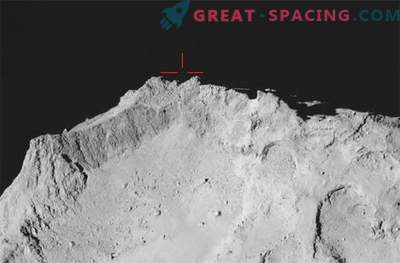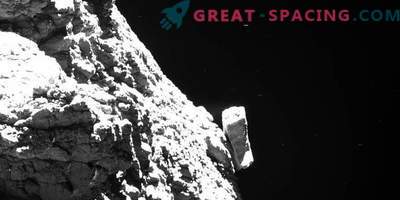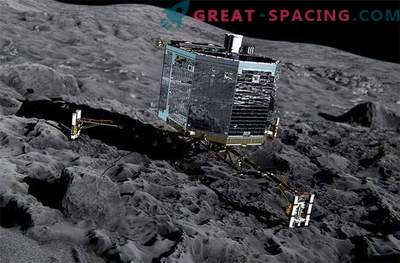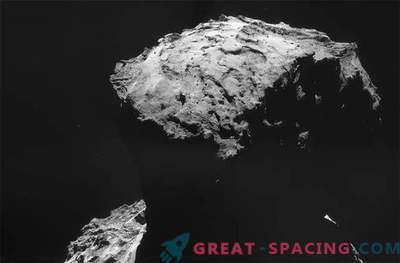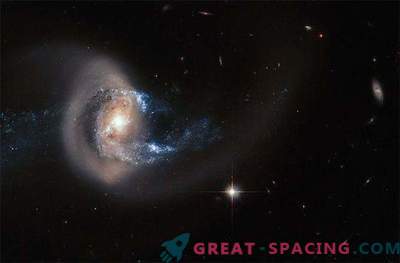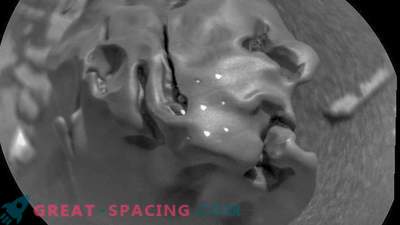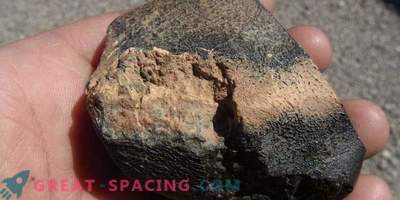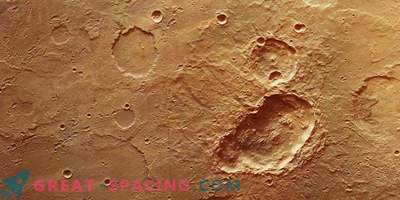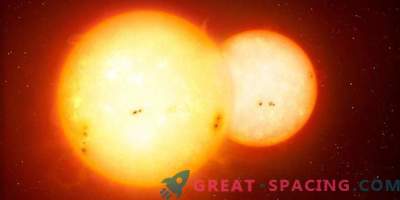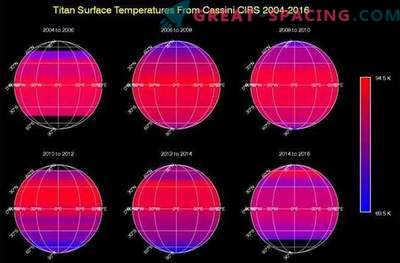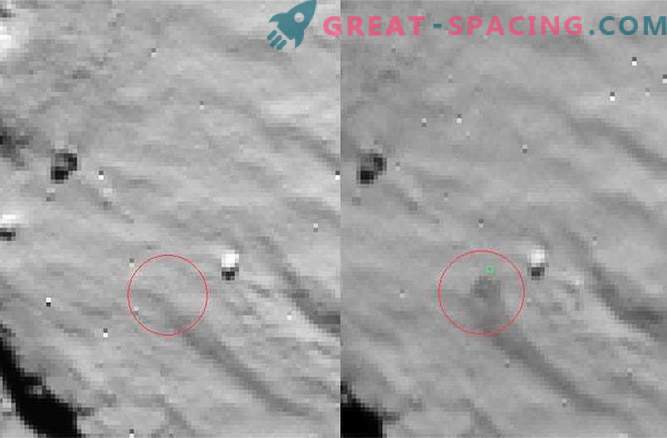
When the Phil descent vehicle was only a few steps from the historic landing on the comet 67P / Churyumov-Gerasimenko, the Rosetta spacecraft, which was just overhead at that time, watched the intended landing site using its navigation camera (NAVCAM). In these two images of a place called Hagilkiya, one can easily distinguish the effects of the landing of the Phil module.
In the left photograph, which was taken 3 minutes and 34 seconds before landing, the descent vehicle was only 250 meters (820 feet) above the comet. The estimated landing site is circled in red. On the right image, taken 1 minute and 26 seconds after landing, the dark area in the red circle is clearly visible. The shaded area is most likely dust that was raised by the legs of the landing module. To emphasize the accuracy of the first landing, a small green square shows the landing site calculated by the mission’s scientists.
Given the resolution of these images, which is 1.3 meters per pixel, the landing was made at a distance of 10 meters from the estimated landing site - the accuracy, to put it mildly, is impressive! Of course, the descent vehicle is not on this frame, since right after landing, Phil's anchor harpoons did not work, which led to a repulsion from the comet's surface. Although most of the impact was absorbed by the landing system, Phil was in the open space for just under 2 hours, until the comet's weak gravity pulled him back down, forcing him to push off a second time, about 1 km from the original landing site. The descent vehicle landed a total of three times.
Scientists are now processing other images of the comet's surface taken by the Rosetta camera to see where Phil eventually settled. They still can not find a small brave landing gear that collects scientific data before its batteries are depleted within a few hours.





